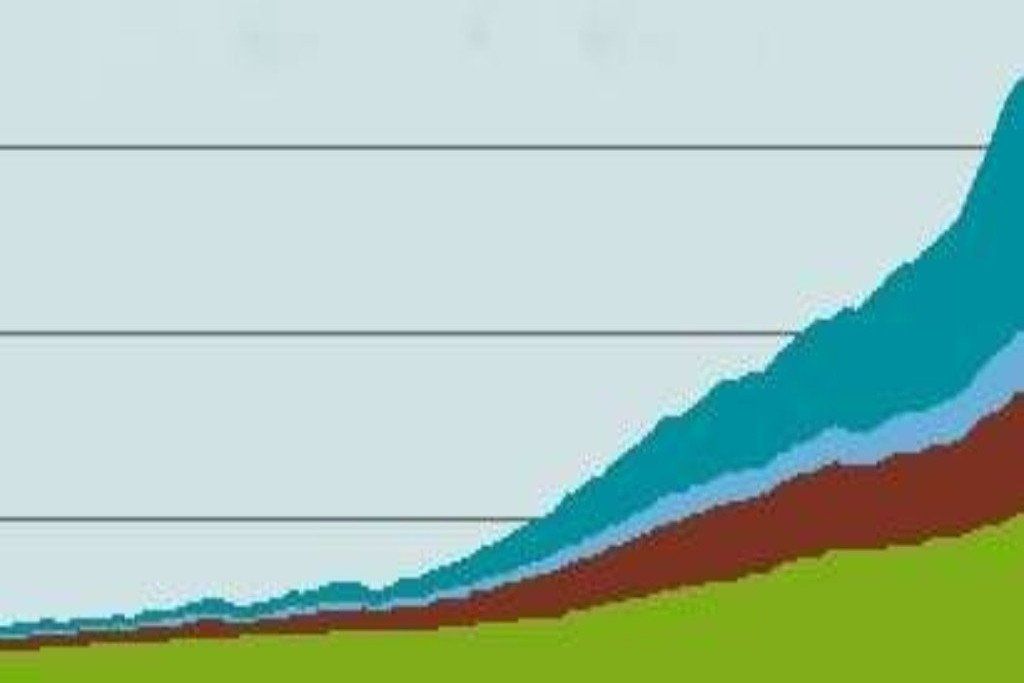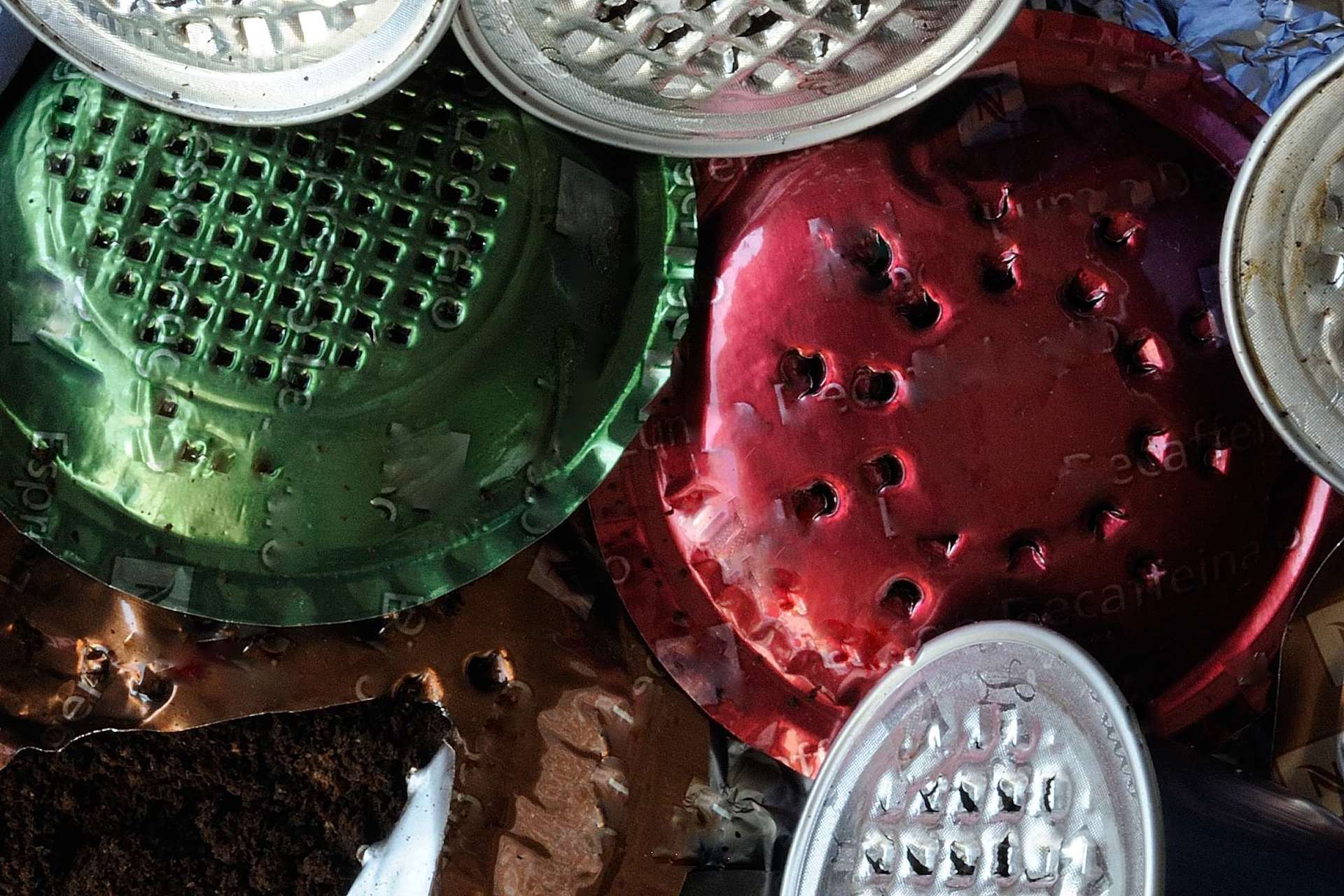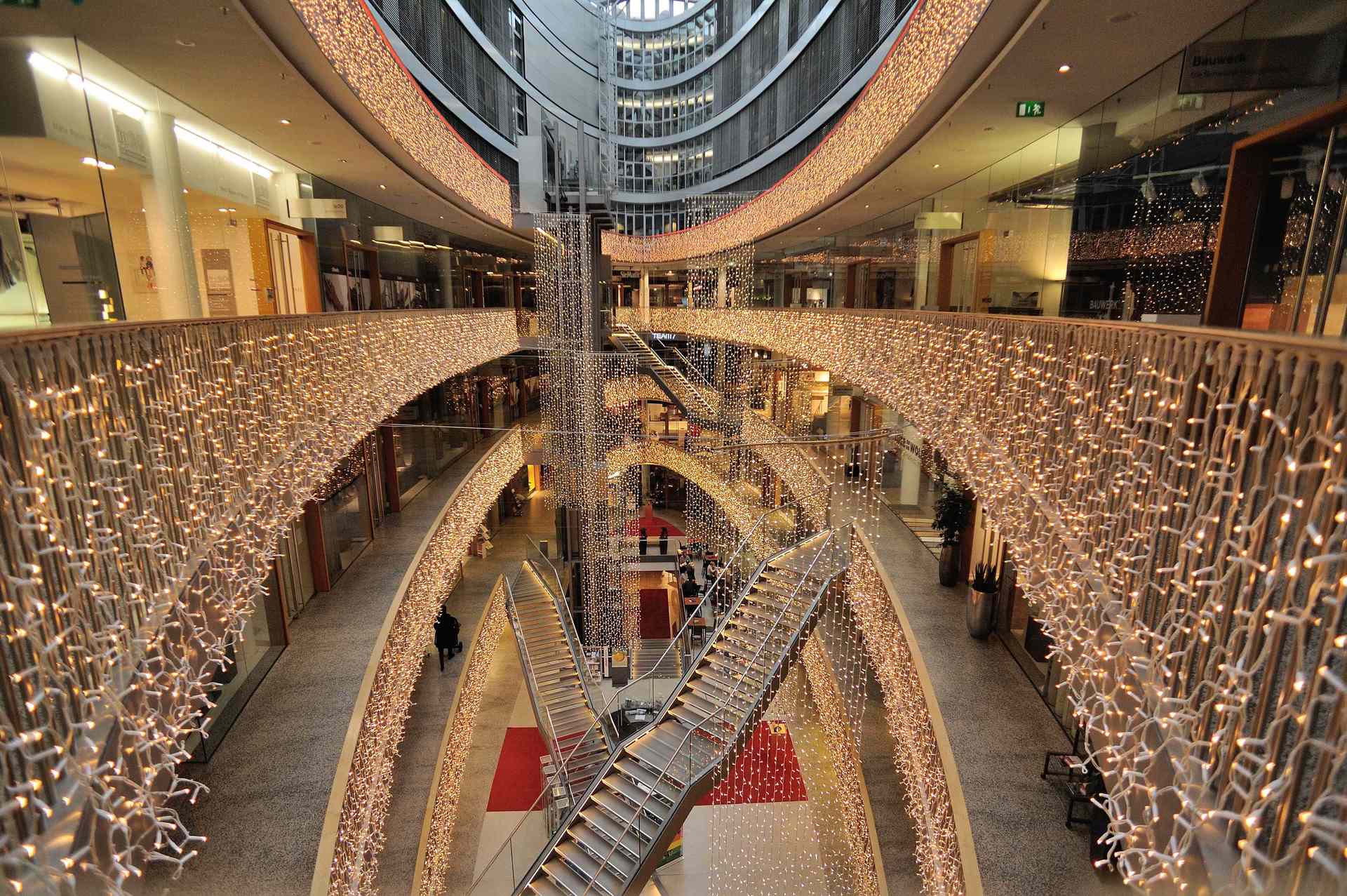Keine Erde in Reserve
Our handling of dwindling resources
Exhibition concept and photos - Michael Funcke-Bartz
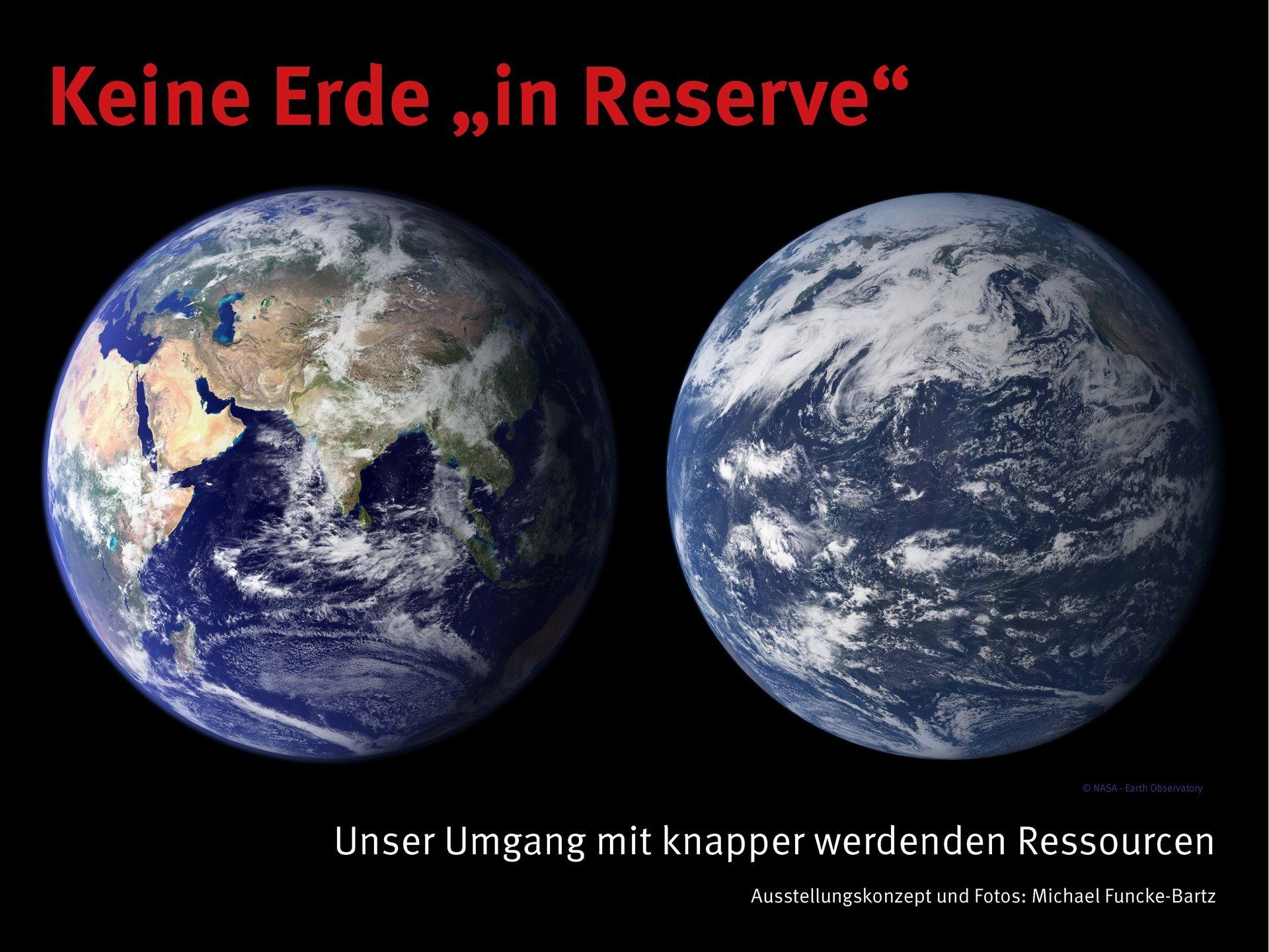
More people worldwide mean more infrastructure, more consumption and more raw material and resource consumption. With increasing scarcity, the economic costs of exploiting important metals and energy sources increase, but also environmental damage and negative social consequences increase massively. Pressure on key ecosystems, such as rainforests, is fueling global climate change, which in turn drives interest in depleting natural resources in sensitive areas such as the Arctic. The focus of the exhibition is on trends and risks of non-renewable mineral resources. The spectrum ranges from mass metals such as copper to the so-called rare earths and the importance of secondary raw materials.
Source of satellite images: NASA Earth Observatory: The Blue Marble
Source of satellite images: NASA Earth Observatory: The Blue Marble
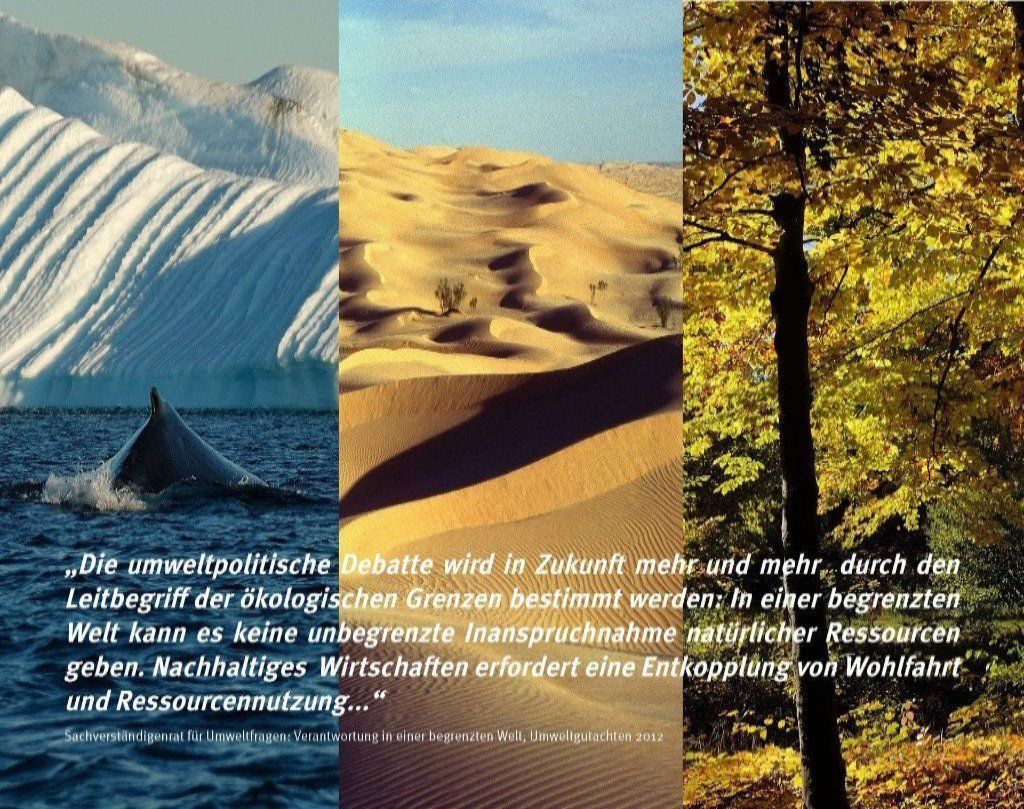
"In the future, the environmental debate will increasingly be determined by the guiding notion of ecological boundaries: in a limited world there can be no unlimited use of natural resources
give. Sustainable management requires a decoupling of welfare and resource use ... "
German Advisory Council on the Environment: Responsibility in a limited world, environmental report 2012
give. Sustainable management requires a decoupling of welfare and resource use ... "
German Advisory Council on the Environment: Responsibility in a limited world, environmental report 2012
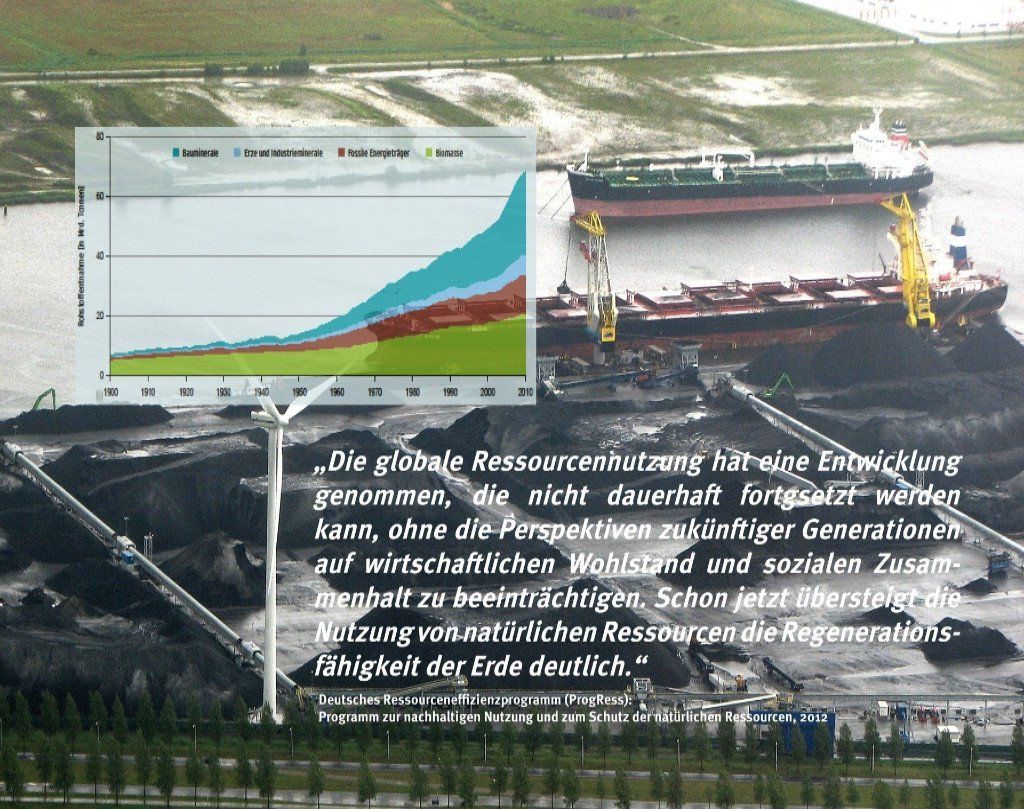
"The global use of resources has a development
that can not be sustained without compromising the prospects of future generations for economic prosperity and social cohesion. Already, the use of natural resources clearly exceeds the regenerative capacity of the earth. "
German Resource Efficiency Program (ProgRess): Program for the sustainable use and protection of natural resources, 2012
that can not be sustained without compromising the prospects of future generations for economic prosperity and social cohesion. Already, the use of natural resources clearly exceeds the regenerative capacity of the earth. "
German Resource Efficiency Program (ProgRess): Program for the sustainable use and protection of natural resources, 2012
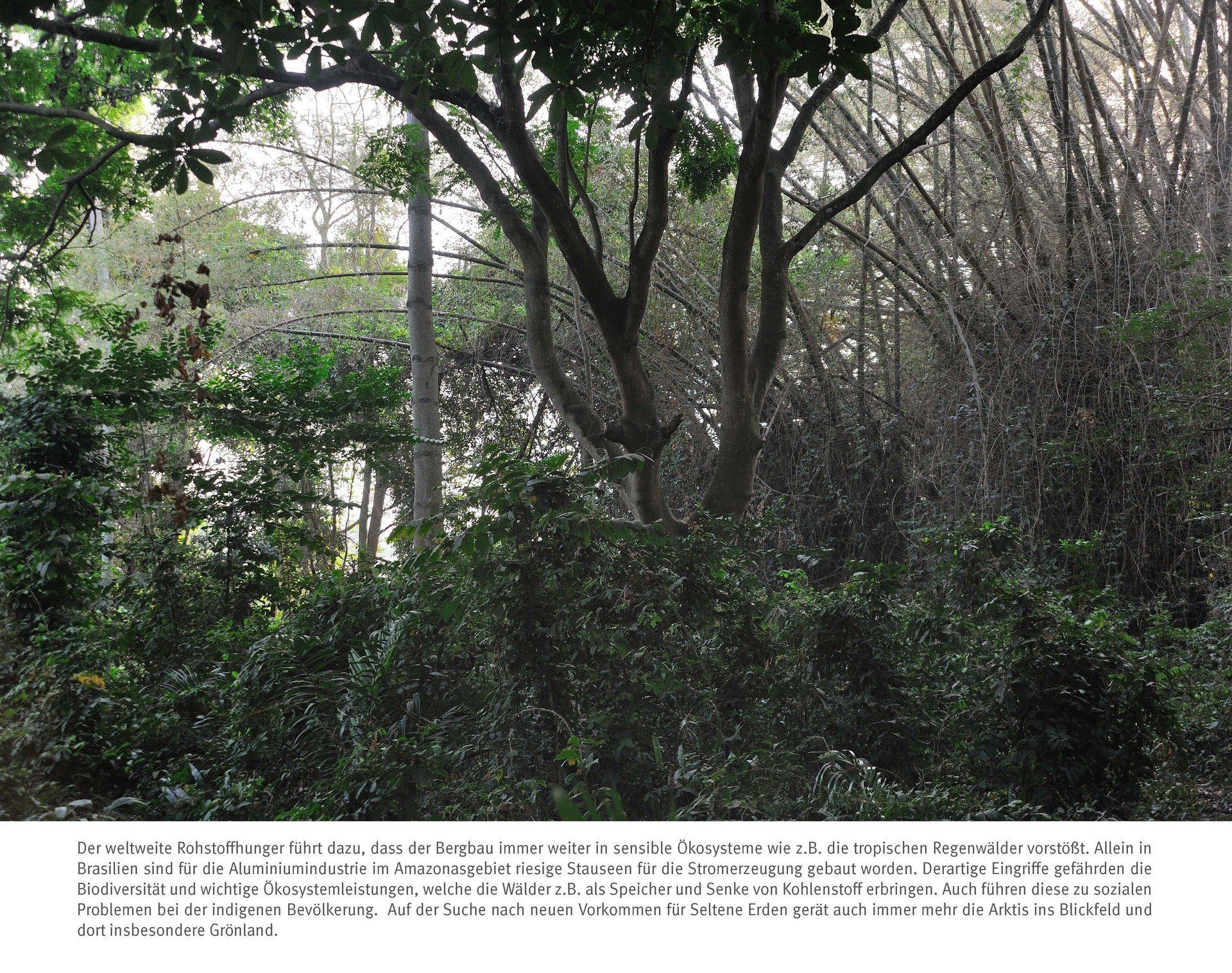
The global hunger for raw materials is leading mining companies to push further and further into sensitive ecosystems, such as tropical rainforests. In Brazil alone, huge reservoirs for power generation have been built for the aluminum industry in the Amazon. Such interventions endanger biodiversity and important ecosystem services that forests provide, for example, as a reservoir and sink of carbon. These also lead to social problems among the indigenous population. In the search for new occurrences for rare earths also more and more the Arctic gets into the field of vision and there in particularGreenland.
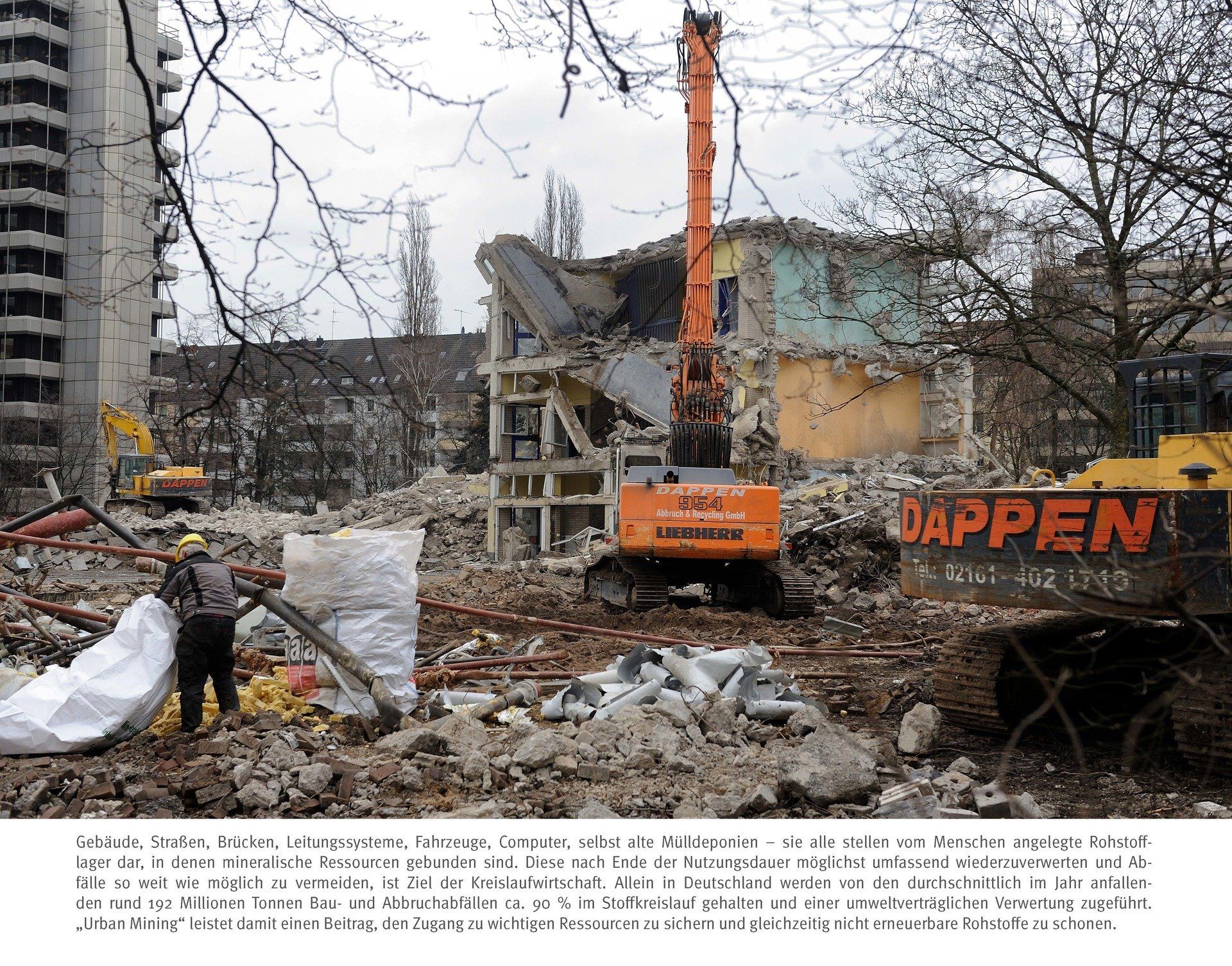
Gebäude, Straßen, Brücken, Leitungssysteme, Fahrzeuge, Computer, selbst alte Mülldeponien – sie alle stellen vom Menschen angelegte Rohstofflager dar, in denen mineralische Ressourcen gebunden sind. Diese nach Ende der Nutzungs-dauer möglichst umfassend wiederzuverwerten und Abfälle so weit wie möglich zu vermeiden, ist Ziel der Kreislaufwirt-schaft. Allein in Deutschland werden von den durchschnittlich im Jahr anfallenden rund 192 Millionen Tonnen Bau- und Abbruchabfällen ca. 90 % im Stoffkreislauf gehalten und einer umweltverträglichen Verwertung zugeführt. „Urban Mining“ leistet damit einen Beitrag, den Zugang zu wichtigen Ressourcen zu sichern und gleichzeitig nicht erneuerbare Rohstoffe zu schonen.

Kupfer besitzt eine hervorragende Leitfähigkeit für Elektrizität und Wärme. Im Sanitärbereich ist seine biostatische Wirkung von Vorteil, die der Bakterienbildung in Wasserleitungen vorbeugt. Kupfer ist daher weltweit stark nachgefragt - Tendenz steigend. Allerdings enthält das Gestein in den Kupferminen immer weniger Erz. Betrug der Erzanteil zu Beginn des 20. Jahrhunderts noch 4 %, so liegt er inzwischen nur noch zwischen 0,2 und 0,5 %. Dies bedeutet, dass bei einer Tonne Kupfer fast 100 Tonnen Abraum entstehen. Auch wird immer mehr Wasser und Energie benötigt, um Kupfererz aus dem Gestein zu lösen. Die Kupferproduktion aus Altmetall erfordert weniger als ein Drittel der Energie, die bei der Erzgewinnung eingesetzt werden muss.
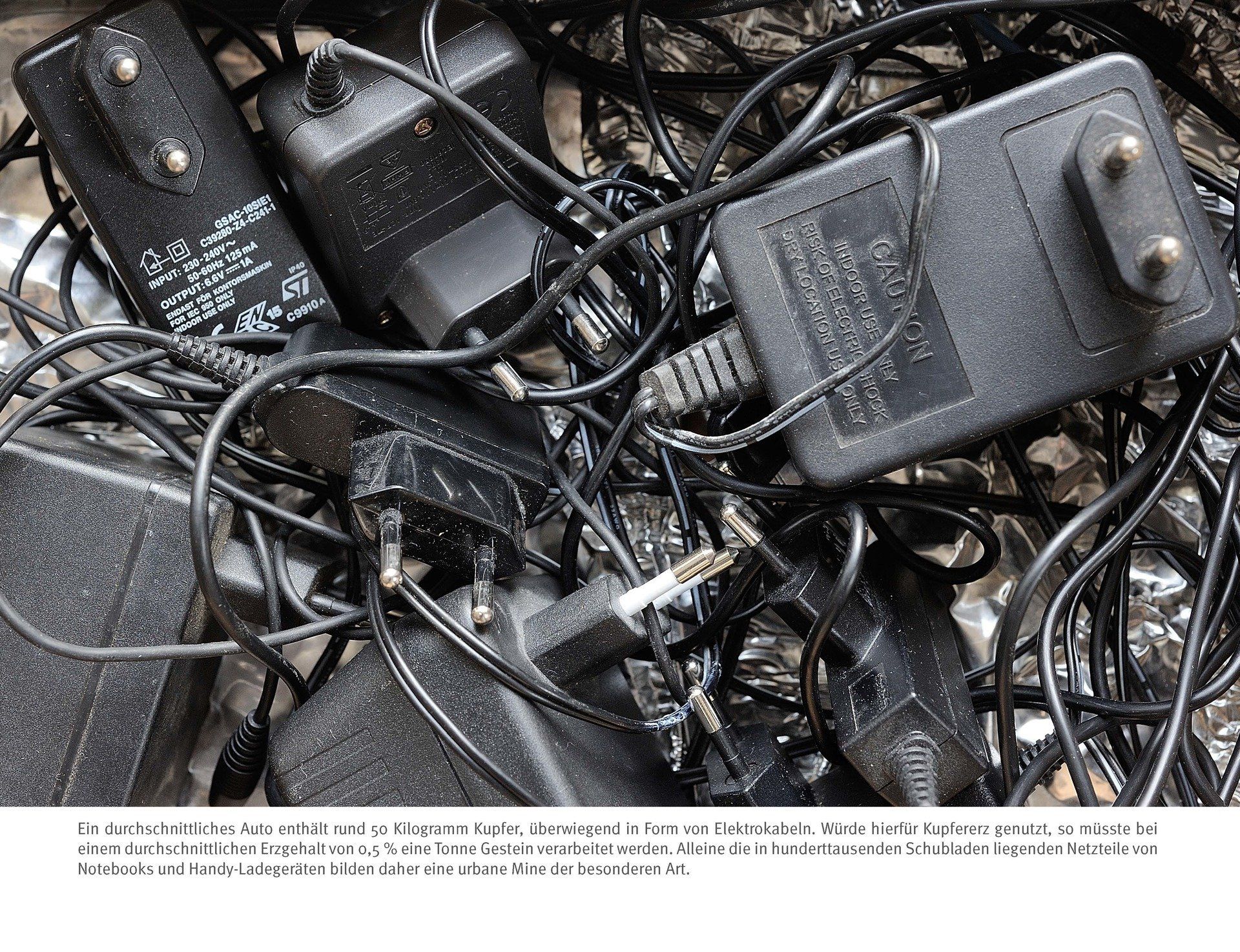
Ein Auto enthält rund 50 Kilogramm Kupfer, überwiegend in Form von Elektrokabeln. Würde hierfür Kupfererz genutzt, so müsste bei einem durchschnitt-lichen Erzgehalt von 0,5 % eine Tonne Gestein verarbeitet werden. Alleine die in hunderttausenden Schubladen liegenden Netzteile von Notebooks und Handy-Ladegeräten bilden daher eine urbane Mine der besonderen Art.
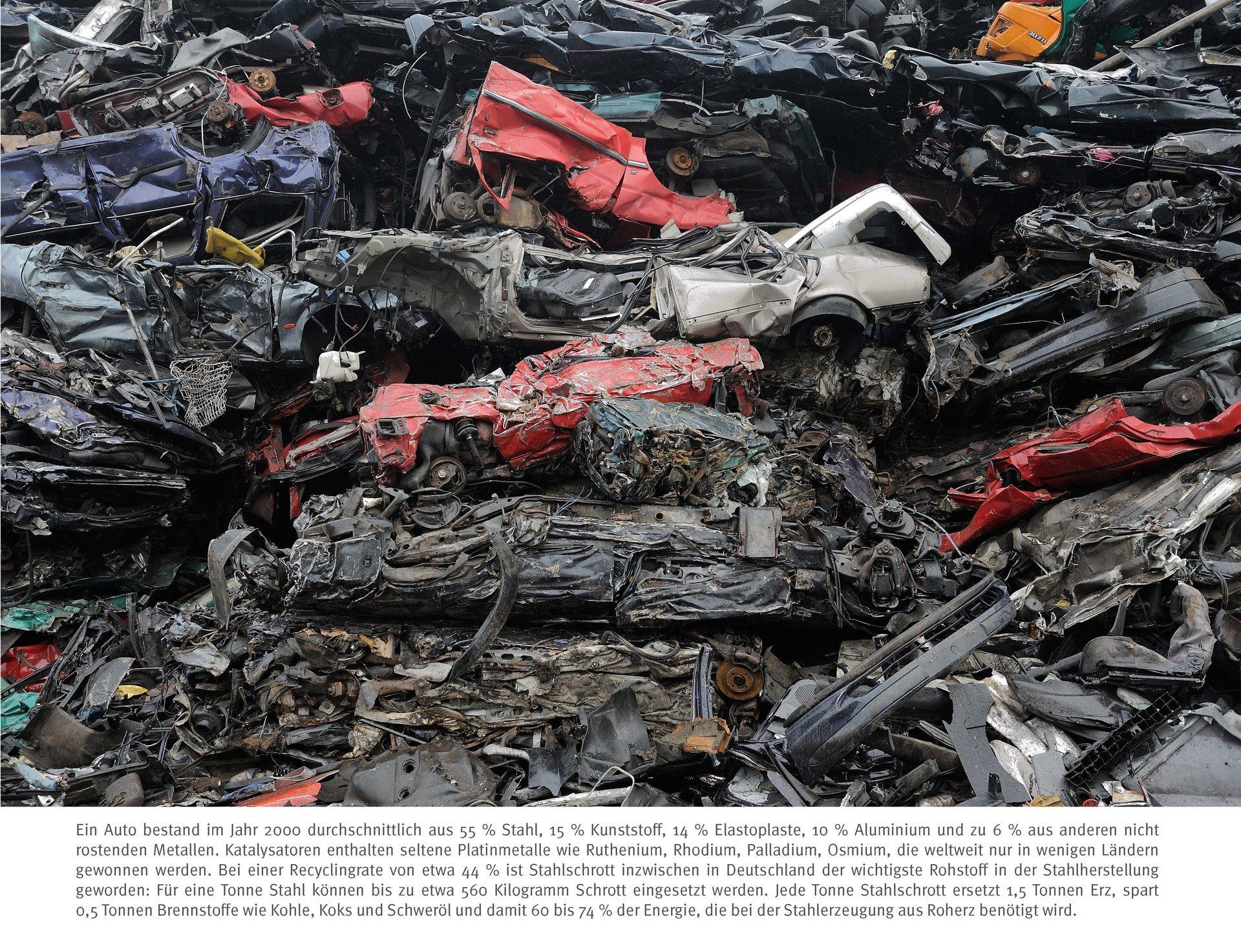
Ein Auto bestand im Jahr 2000 durchschnittlich aus 55 % Stahl, 15 % Kunststoff, 14 % Elastoplaste, 10 % Aluminium und zu 6 % aus anderen nicht rostenden Metallen. Katalysatoren enthalten seltene Platinmetalle wie Ruthenium, Rhodium, Palladium, Osmium, die weltweit nur in wenigen Ländern
gewonnen werden. Bei einer Recyclingrate von etwa 44 % ist Stahlschrott inzwischen in Deutschland der wichtigste Rohstoff in der Stahlherstellung geworden: Für eine Tonne Stahl können bis zu etwa 560 Kilogramm Schrott eingesetzt werden. Jede Tonne Stahlschrott ersetzt 1,5 Tonnen Erz, spart
0,5 Tonnen Brennstoffe wie Kohle, Koks und Schweröl und damit 60 bis 74 % der Energie, die bei der Stahlerzeugung aus Roherz benötigt wird.
gewonnen werden. Bei einer Recyclingrate von etwa 44 % ist Stahlschrott inzwischen in Deutschland der wichtigste Rohstoff in der Stahlherstellung geworden: Für eine Tonne Stahl können bis zu etwa 560 Kilogramm Schrott eingesetzt werden. Jede Tonne Stahlschrott ersetzt 1,5 Tonnen Erz, spart
0,5 Tonnen Brennstoffe wie Kohle, Koks und Schweröl und damit 60 bis 74 % der Energie, die bei der Stahlerzeugung aus Roherz benötigt wird.
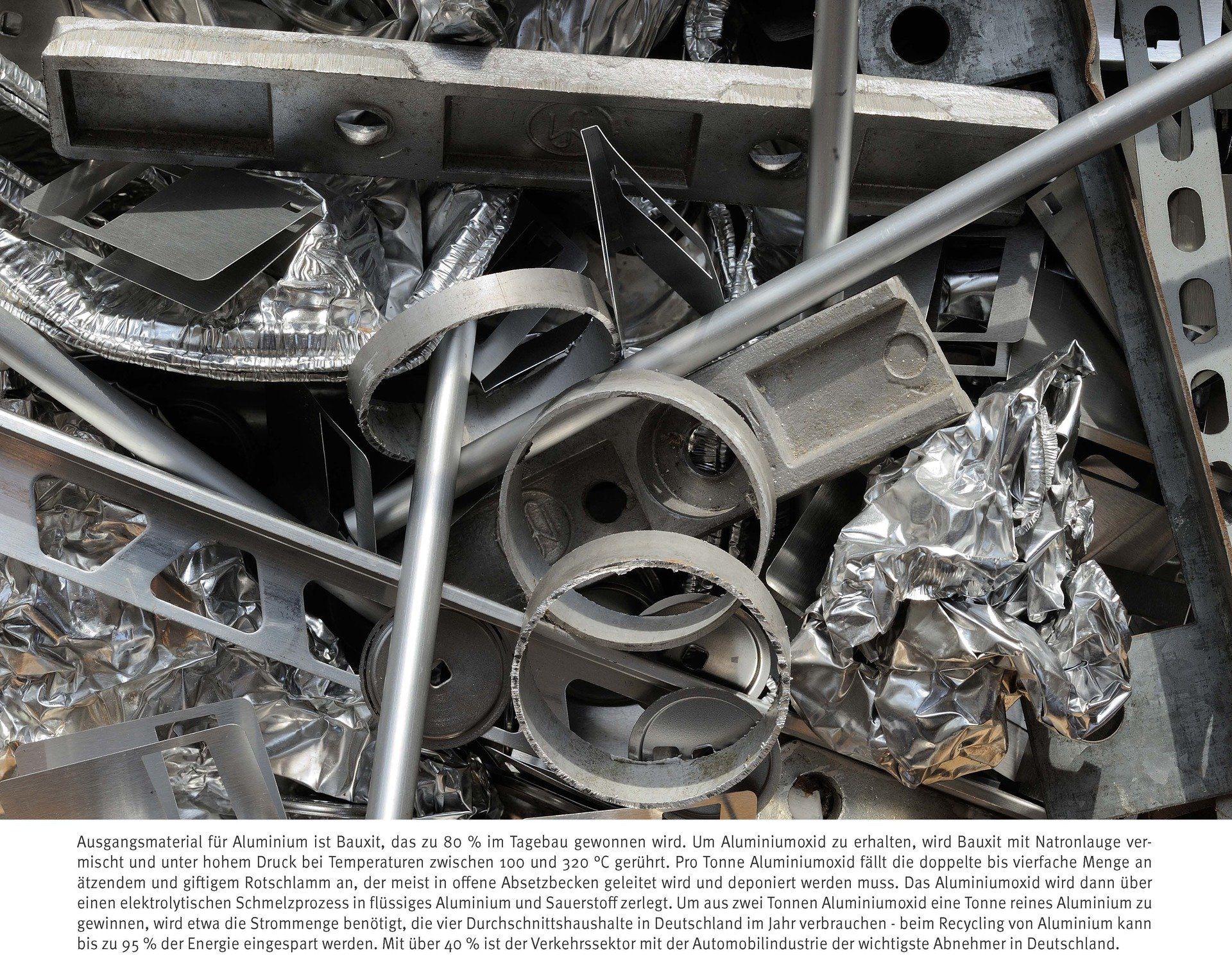
Ausgangsmaterial für Aluminium ist Bauxit, das zu 80 % im Tagebau gewonnen wird. Um Aluminiumoxid zu erhalten, wird Bauxit mit Natronlauge vermischt und unter hohem Druck bei Temperaturen zwischen 100 und 320 °C gerührt. Pro Tonne Aluminiumoxid fällt die doppelte bis vierfache Menge an
ätzendem und giftigem Rotschlamm an, der meist in offene Absetzbecken geleitet wird und deponiert werden muss. Das Aluminiumoxid wird dann über einen elektrolytischen Schmelzprozess in flüssiges Aluminium und Sauerstoff zerlegt. Um aus zwei Tonnen Aluminiumoxid eine Tonne reines Aluminium zu gewinnen, wird etwa die Strommenge benötigt, die vier Durchschnittshaushalte in Deutschland im Jahr verbrauchen - beim Recycling von Aluminium kann bis zu 95 % der Energie eingespart werden. Mit über 40 % ist der Verkehrssektor mit der Automobilindustrie der wichtigste Abnehmer in Deutschland.
ätzendem und giftigem Rotschlamm an, der meist in offene Absetzbecken geleitet wird und deponiert werden muss. Das Aluminiumoxid wird dann über einen elektrolytischen Schmelzprozess in flüssiges Aluminium und Sauerstoff zerlegt. Um aus zwei Tonnen Aluminiumoxid eine Tonne reines Aluminium zu gewinnen, wird etwa die Strommenge benötigt, die vier Durchschnittshaushalte in Deutschland im Jahr verbrauchen - beim Recycling von Aluminium kann bis zu 95 % der Energie eingespart werden. Mit über 40 % ist der Verkehrssektor mit der Automobilindustrie der wichtigste Abnehmer in Deutschland.
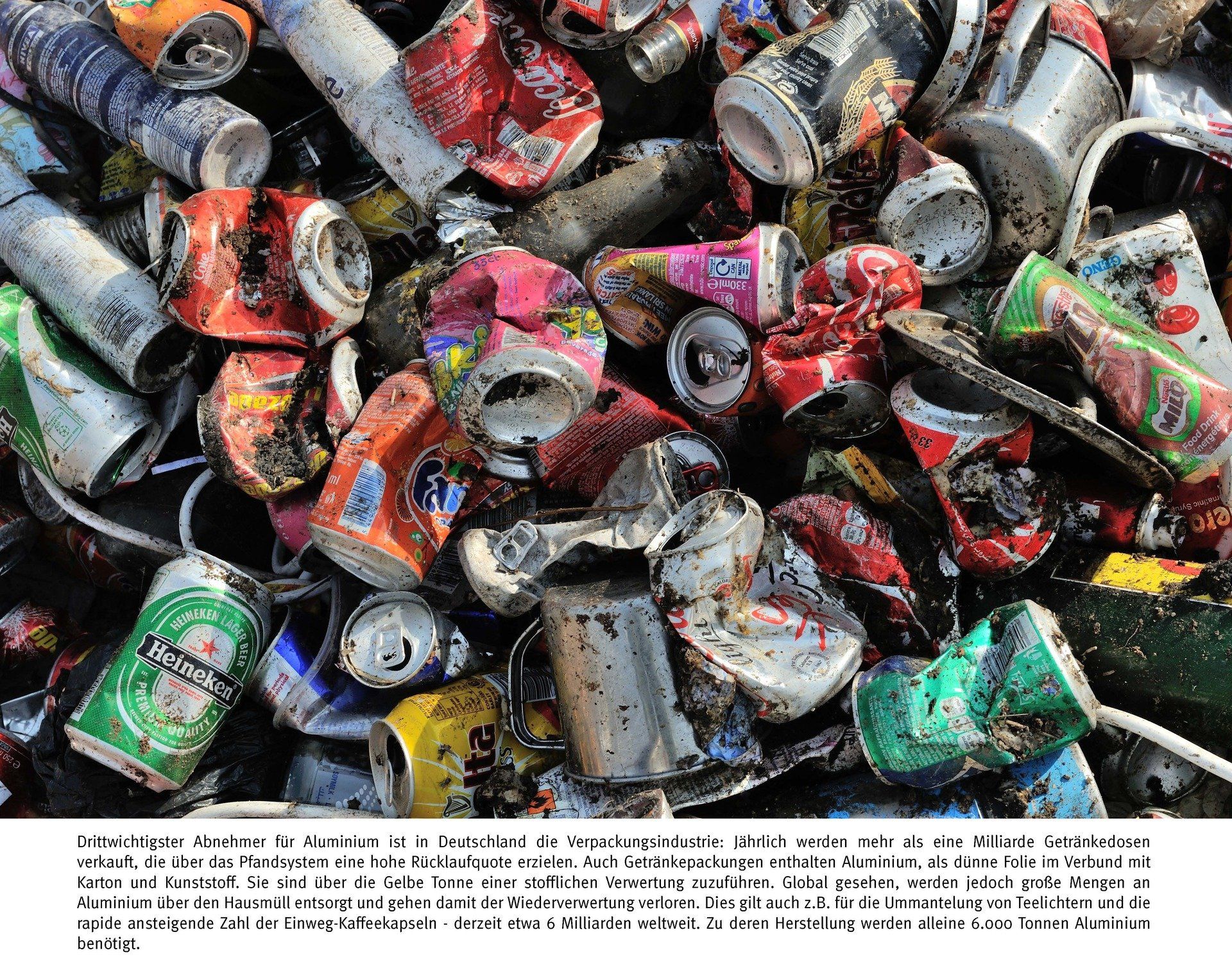
The third most important customer for aluminum in Germany is the packaging industry: Every year, more than one billion beverage cans are sold, which achieve a high return rate via the deposit system. Also beverage packs contain aluminum, as a thin film in conjunction with
Cardboard and plastic. They are to be supplied via the yellow bin of a material recycling. On a global scale, however, large amounts of aluminum are disposed of with household waste and are therefore lost to recycling. This also applies, for example, to the coating of tea lights and the rapidly increasing number of disposable coffee capsules - currently about 6 billion worldwide. Its production requires 6,000 tons of aluminum alone.
Cardboard and plastic. They are to be supplied via the yellow bin of a material recycling. On a global scale, however, large amounts of aluminum are disposed of with household waste and are therefore lost to recycling. This also applies, for example, to the coating of tea lights and the rapidly increasing number of disposable coffee capsules - currently about 6 billion worldwide. Its production requires 6,000 tons of aluminum alone.

In Deutschland werden knapp 44 % der verwendeten Batterien gesammelt und wiederverwertet. Damit wird die gesetzlich vorgeschriebene Quote von 35 % zwar überschritten, 56 % der Batterien werden jedoch mit dem Hausmüll entsorgt oder verbleiben im Bestand. Das sind knapp 20.000 Tonnen, aus denen je nach Batterietyp nickelhaltiges Eisen und Ferromangan, Kobalt, Nickel, Kupfer und Lithium zurückgewonnen werden könnten. Knopfzellen sind quecksilberhaltig und gehören auf keinen Fall in den Hausmüll. Beim Recycling wird das Quecksilber erfasst und kann weiter verarbeitet werden.
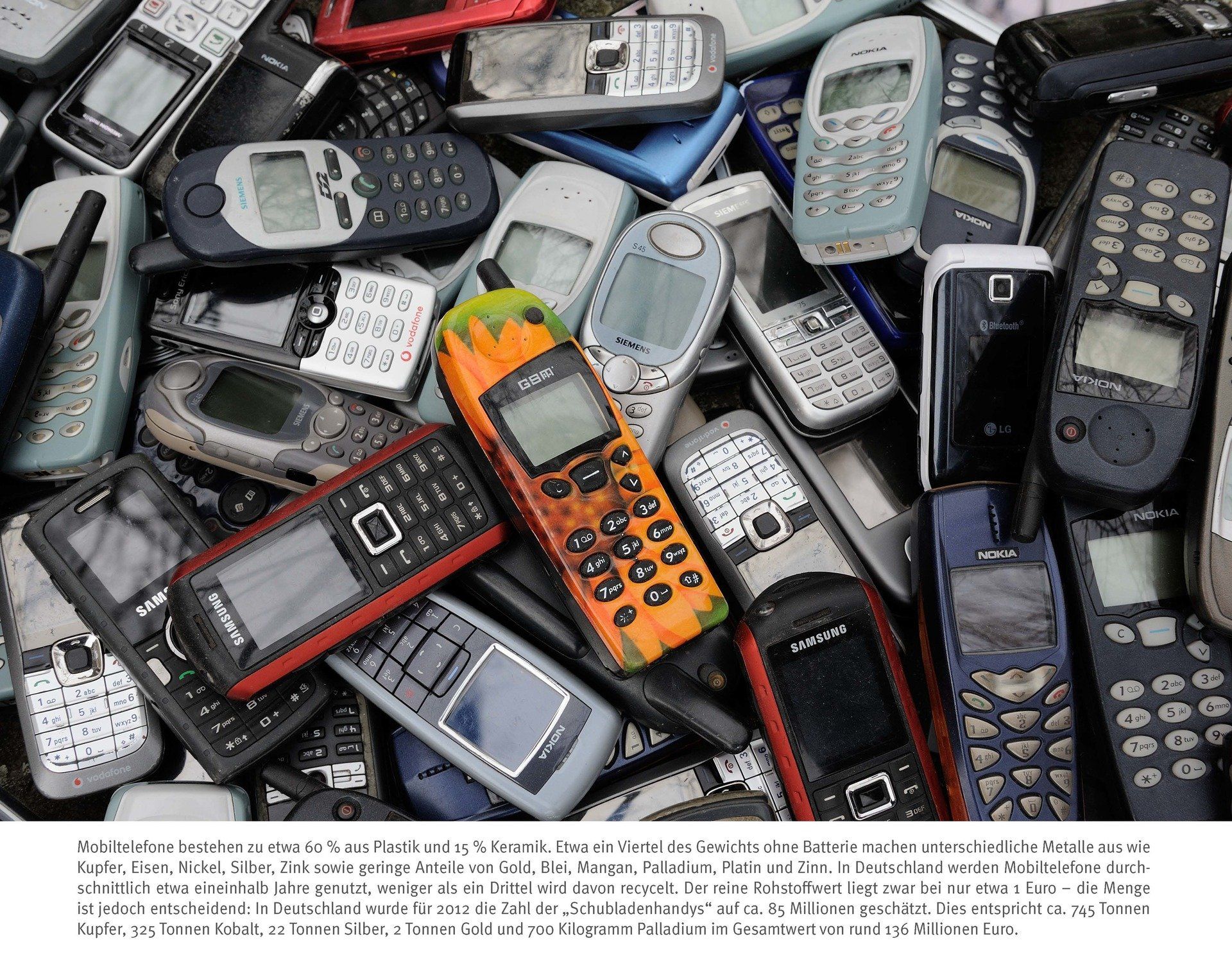
Mobiltelefone bestehen zu etwa 60 % aus Plastik und 15 % Keramik. Etwa ein Viertel des Gewichts ohne Batterie machen unterschiedliche Metalle aus wie Kupfer, Eisen, Nickel, Silber, Zink sowie geringe Anteile von Gold, Blei, Mangan, Palladium, Platin und Zinn. In Deutschland werden Mobiltelefone durchschnittlich etwa eineinhalb Jahre genutzt, weniger als ein Drittel wird davon recycelt. Der reine Rohstoffwert liegt zwar bei nur etwa 1 Euro – die Menge ist jedoch entscheidend: In Deutschland wurde für 2012 die Zahl der „Schubladenhandys“ auf ca. 85 Millionen geschätzt. Dies entspricht ca. 745 Tonnen
Kupfer, 325 Tonnen Kobalt, 22 Tonnen Silber, 2 Tonnen Gold und 700 Kilogramm Palladium im Gesamtwert von rund 136 Millionen Euro.
Kupfer, 325 Tonnen Kobalt, 22 Tonnen Silber, 2 Tonnen Gold und 700 Kilogramm Palladium im Gesamtwert von rund 136 Millionen Euro.
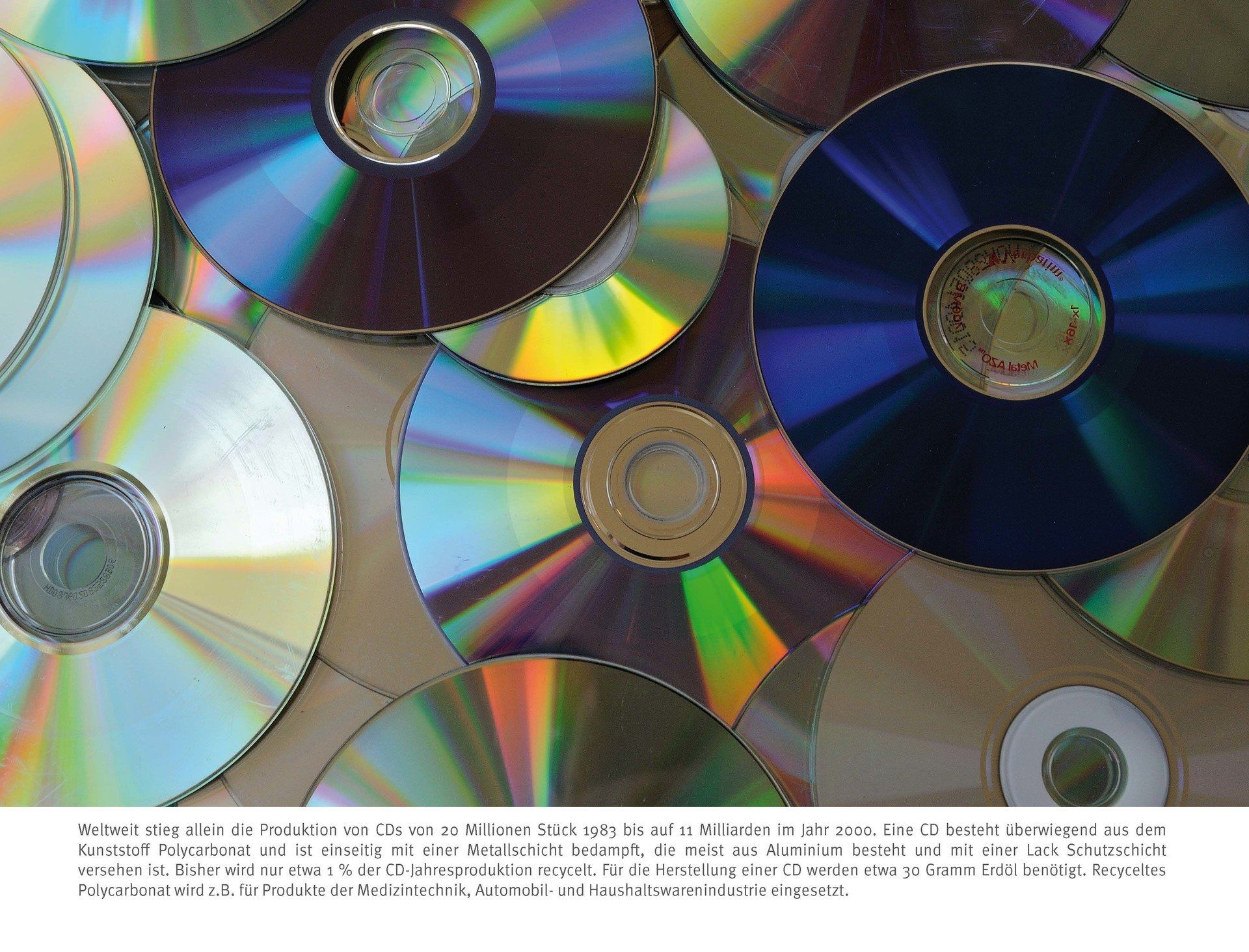
Weltweit stieg allein die Produktion von CDs von 20 Millionen Stück 1983 bis auf 11 Milliarden im Jahr 2000. Eine CD besteht überwiegend aus dem Kunststoff Polycarbonat und ist einseitig mit einer Metallschicht bedampft, die meist aus Aluminium besteht und mit einer Lack Schutzschicht
versehen ist. Bisher wird nur etwa 1 % der CD-Jahrespro-duktion recycelt. Für die Herstellung einer CD werden etwa 30 Gramm Erdöl benötigt. Recyceltes Polycarbonat wird z.B. für Produkte der Medizintechnik, Automobil- und Haushalts-warenindustrie eingesetzt.
versehen ist. Bisher wird nur etwa 1 % der CD-Jahrespro-duktion recycelt. Für die Herstellung einer CD werden etwa 30 Gramm Erdöl benötigt. Recyceltes Polycarbonat wird z.B. für Produkte der Medizintechnik, Automobil- und Haushalts-warenindustrie eingesetzt.

Processors are the heart of every computer. They contain the most concentrated content of precious metals, for example in the gold-plated contacts. In addition to gold, silver, palladium and copper processors can be recycled in low concentrations. With the development of computer and manufacturing technology, the layer thicknesses of electronic contacts and circuit boards have been reduced so that the recycling values between the different device generations vary widely. The smaller and more complex the components become, the more difficult it is to recover the valuable metals contained therein.
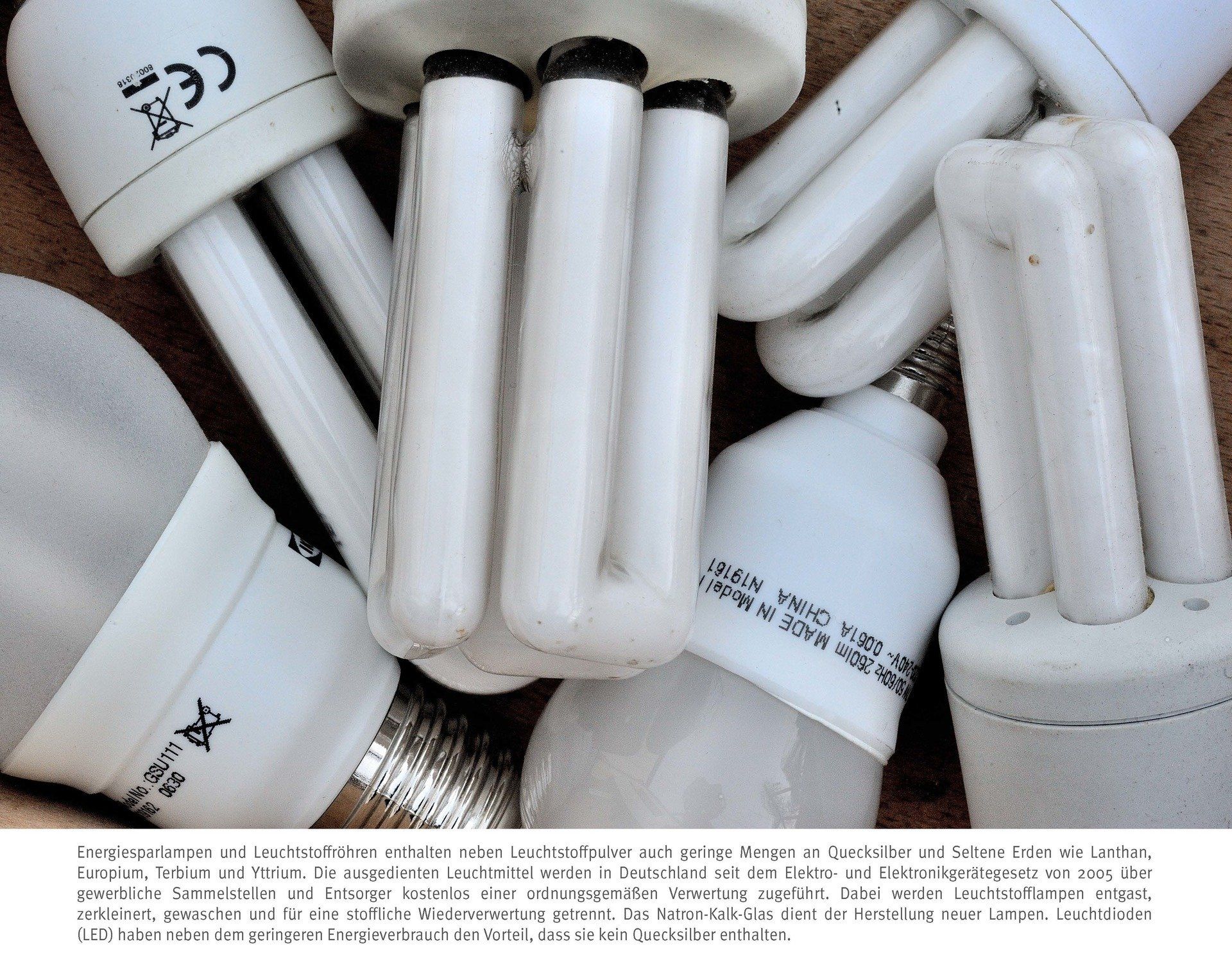
Energy-saving lamps and fluorescent tubes contain not only phosphor powder but also small amounts of mercury and rare earths such as lanthanum, europium, terbium and yttrium. The disused bulbs are in Germany since the Electrical and Electronic Equipment Act of 2005 on
commercial collection points and disposal companies are supplied free of charge for proper recycling. Here, fluorescent lamps are degassed, crushed, washed and separated for recycling. The soda lime glass is used to make new lamps. LEDs
(LED) have in addition to the lower energy consumption the advantage that they contain no mercury.
commercial collection points and disposal companies are supplied free of charge for proper recycling. Here, fluorescent lamps are degassed, crushed, washed and separated for recycling. The soda lime glass is used to make new lamps. LEDs
(LED) have in addition to the lower energy consumption the advantage that they contain no mercury.
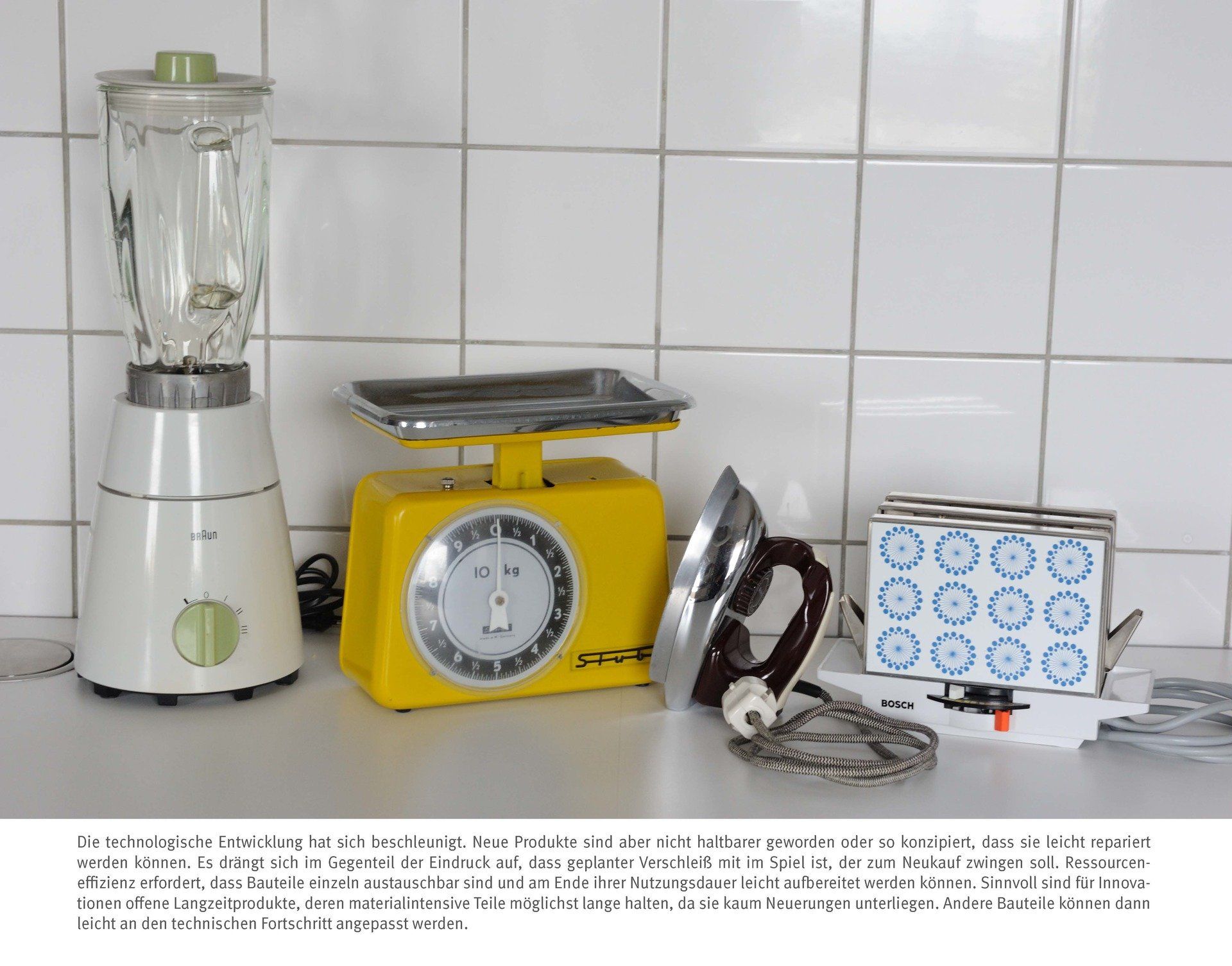
The technological development has accelerated. However, new products have not become more durable or designed to be easily repaired. On the contrary, it gives the impression that planned wear is involved in the game, which should force a new purchase. Resources-
Efficiency requires that components be individually interchangeable and easily reprocessed at the end of their useful life. It makes sense to have open, long-term products that keep their material-intensive parts as long as possible, since they are hardly subject to any innovations. Other components can then be easily adapted to technical progress.
Efficiency requires that components be individually interchangeable and easily reprocessed at the end of their useful life. It makes sense to have open, long-term products that keep their material-intensive parts as long as possible, since they are hardly subject to any innovations. Other components can then be easily adapted to technical progress.
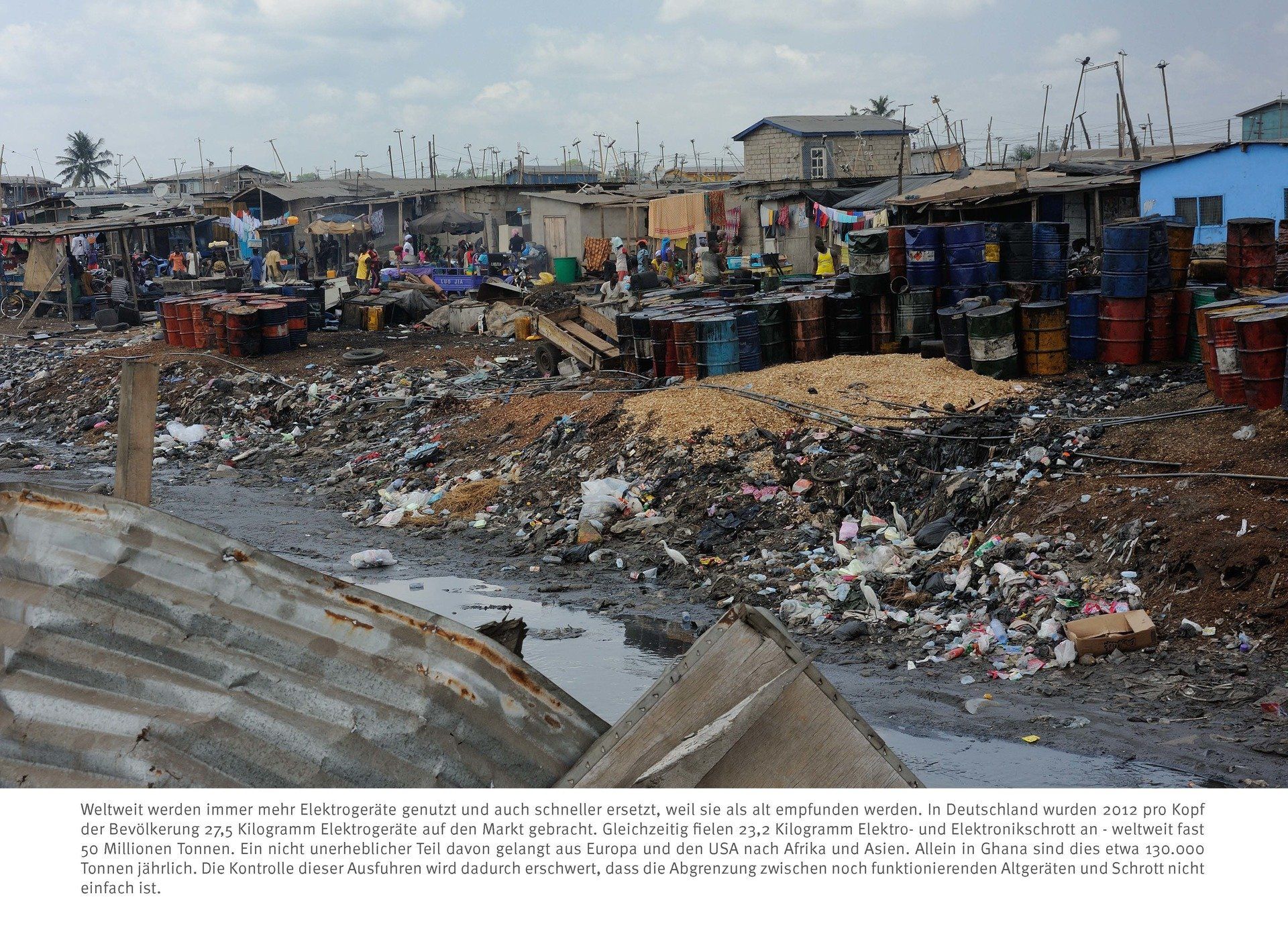
Nur 35% oder 3,3 Millionen Tonnen der in Europa anfallenden Elektro- und Elektronikaltgeräte, kurz Elektroschrott genannt, werden von offiziellen Sammel- und Recyclingsystemen erfasst. Die übrigen 65 % oder 6,15 Mio. Tonnen werden entweder:
- Exportiert (1,5 Mio. t)
- Unter nicht-konformen Bedingungen in Europa recycelt
(3,15 Mio. t)
- 750.000 t werden nach Wertstoffen ausgeschlachtet
- 750.000 t werden über den Hausmüll entsorgt
Siehe auch:
- Exportiert (1,5 Mio. t)
- Unter nicht-konformen Bedingungen in Europa recycelt
(3,15 Mio. t)
- 750.000 t werden nach Wertstoffen ausgeschlachtet
- 750.000 t werden über den Hausmüll entsorgt
Siehe auch:
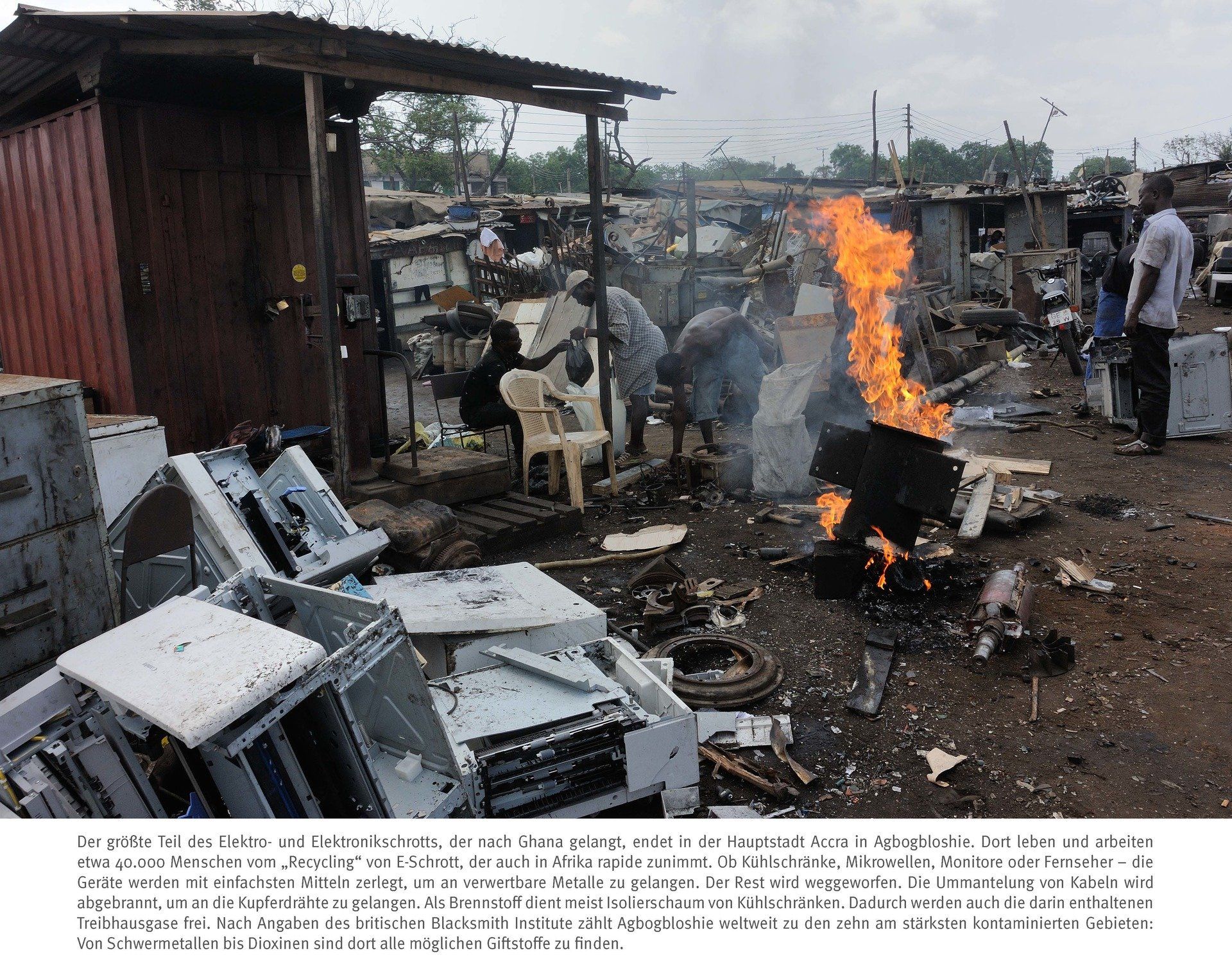
In Deutschland fielen 2014 pro Kopf der Bevölkerung 21,6 kg Elektro- und Elektronikschrott an – 15-mal so viel wie in Ghana. Doch auch dort nimmt die Menge nicht mehr funktionsfähiger Fernseher, Computer, Drucker, Kopierer, Kühlschränke, Klimaanlagen und Energiesparlampen jährlich zu.
Etwa zwei Drittel der dort ankommenden Gebrauchtgeräte sind schon älter, wenn sie von Europa nach Ghana verschifft werden und haben dann nur noch eine geringe Haltbarkeit. 10 – 15 % können allerdings nicht mehr repariert oder für Ersatzteile genutzt werden. Sie werden auf Schrottplätzen wie Old Fadama (Agbogbloshie) nach Wertstoffen ausgeschlachtet.
Etwa zwei Drittel der dort ankommenden Gebrauchtgeräte sind schon älter, wenn sie von Europa nach Ghana verschifft werden und haben dann nur noch eine geringe Haltbarkeit. 10 – 15 % können allerdings nicht mehr repariert oder für Ersatzteile genutzt werden. Sie werden auf Schrottplätzen wie Old Fadama (Agbogbloshie) nach Wertstoffen ausgeschlachtet.
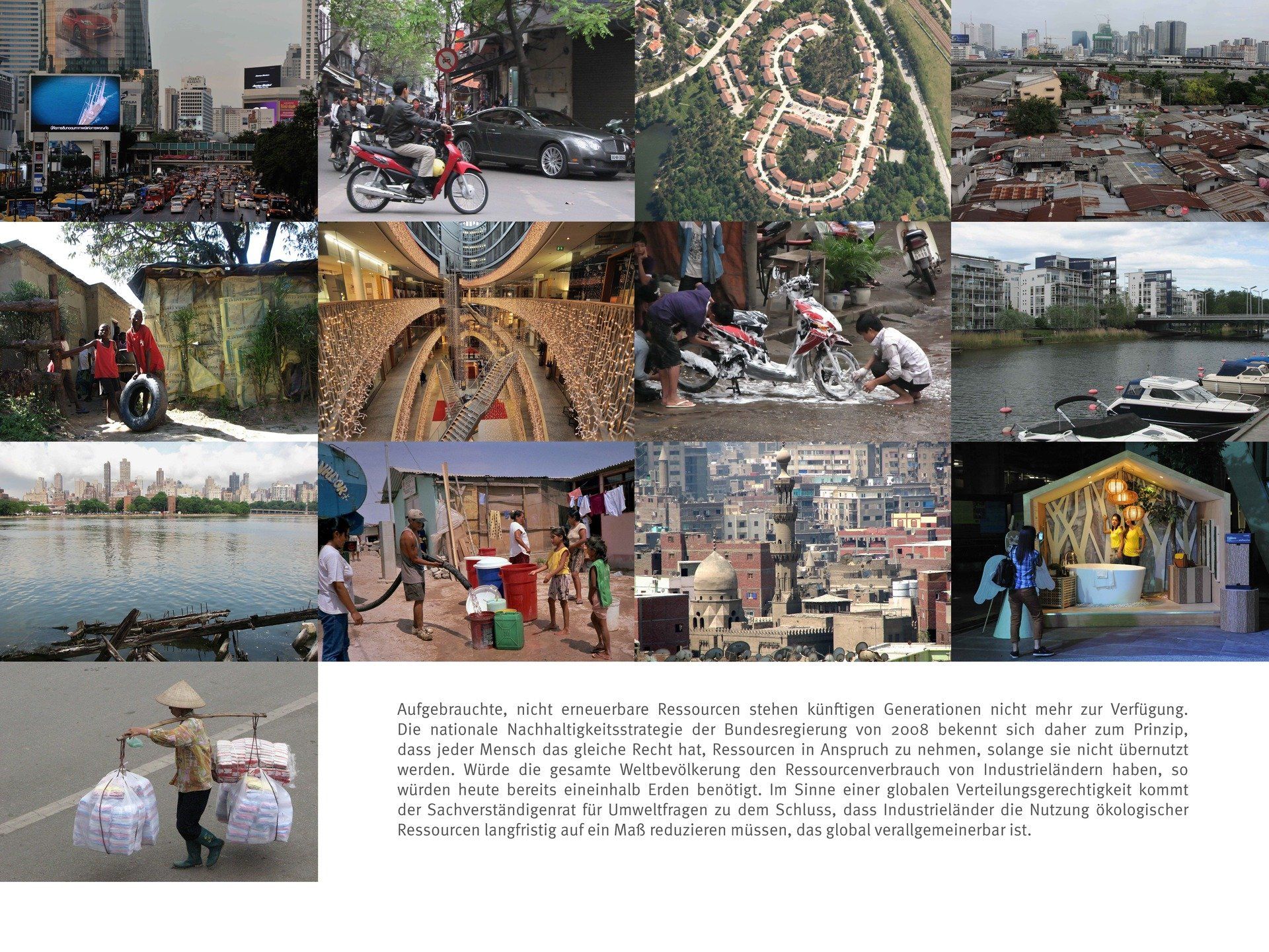
Exploited, non-renewable resources are no longer available to future generations. The national sustainability strategy of the Federal Government of 2008 is therefore committed to the principle that every human being has the same right to use resources as long as they are not overused. If the entire world population had the resource consumption of industrialized countries, today one and a half earths would already be needed. In the spirit of global distribution justice, the German Council of Environmental Experts concludes that developed countries must reduce the use of ecological resources to a level that can be globally generalized in the long term.


